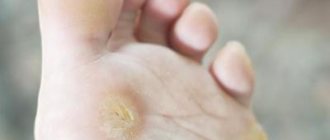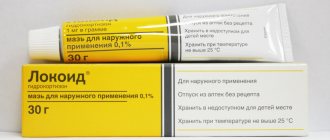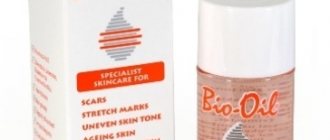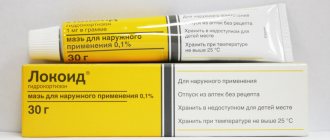Papillomas cause enormous aesthetic discomfort. They can have different sizes and shapes. Such formations should be removed as soon as possible.
For this purpose, today a special patch for papillomas is often used, but before using such products you need to familiarize yourself with all the indications and contraindications for their use.
Contraindications
Despite the therapeutic composition of the Salipod patch, there are still a number of reasons why you should refuse to use it.
The main ones are the following:
- Sensitivity . Experts do not recommend using the product if the skin is hypersensitive or if you are allergic to the components contained in the medicinal patch;
- Moles . Do not use the Salipod patch on areas of the skin where there are moles, age spots, or on healthy areas of the skin;
- Children . Children under 10 years of age should not use the patch, as children have delicate skin;
- Pregnancy . The Salipod patch is not recommended for use during pregnancy, as indicated in the instructions for use;
- Wounds . If there are open wounds, cracks, suppuration, pimples on the skin;
- Water calluses . In the event that calluses contain liquid;
- Kidneys . In case of renal failure.
Areas of the sole where lesions are most common and require caution when applying the medicated patch.
Attention! The instructions for using the Salipod patch say that you should not stick the patch on healthy skin so as not to harm it.
Release form and cost of the drug
The medicinal patch is available in different types and sizes.
Most often in pharmacies you can find the following forms of release:
- “Salipod” patch 6×10, price ranges from 40-45 rubles depending on the region of the country;
- “Salipod” patch 2×10 dark color;
- “Salipod” patch 4×10 white color – price from 35-60 rubles;
- “Salipod” patch, set of 11 pieces – price 80 rubles.
Manufacturers produce patches of various shapes.
Indications for use
Indications for the drug may vary.
As the instructions for use indicate, the Salipod patch is used:
- In the treatment of calluses, incl. Blood calluses;
- For corns;
- When warts form, both on the feet and hands.
Foci of pathologies to which the Salipod patch is applied.
Attention! Do not apply the medicinal patch to any damaged surface of the skin - wounds, burns, cuts.
Action of the Salipod patch
With the help of salicylic acid (32%), which is part of the active substance of the medicinal patch, sulfur (8%) easily enters the deeper subcutaneous layers.
Sulfur has an antimicrobial effect and softens rough skin.
Using the drug topically, sulfur provokes exfoliation and death of harmful bacteria from the surface of the epidermis , as a result of which they die. Salicylic acid has a slight disinfecting effect.
It also has the following properties:
- Softening the skin, while keratinized particles on the surface of the skin are gently removed, due to which sulfur penetrates much deeper into the epidermis;
- Drying wounded skin areas;
- Anti-inflammatory property.
When the patch covers the foci of callous or wart pathologies, the healing process begins with the eventual growth of healthy skin at the site of application of the product.
The active ingredient in the patch maintains an acidic environment on the surface of the skin , which prevents the proliferation of various bacteria or fungi. Since the Salipod patch contains salicylic acid, it has a specific odor, which is normal.
It is important to know! Since the acid can cause irritation, experts recommend not using the patch on intact areas of the skin.
Possible side effects
There are cases where the Salipod medicinal patch turned out to be the cause of dermatitis, which is accompanied by itching, burning, and the area of skin that was in contact with the patch begins to turn red.
Dermatologists recommend steaming your feet before using the patch and then wiping them dry with a towel. If there is redness in the area of the skin where the application was made, then you should stop using the patch.
To avoid side effects when using the Salipod patch, there are instructions for use that you should read.
Instructions for using the patch
It is recommended to use the Salipod patch in the cases described below.
For calluses and corns
Corns are areas of the body that have been subject to prolonged exposure to external pressure, similar to old calluses. The difference between calluses and corns is the depth of penetration - calluses penetrate deeper, and corns are on the surface of the damaged area.
To quickly and effectively get rid of this problem, use the Salipod patch. Dermatologists advise using other medications along with the patch that speed up the process of skin restoration. Based on many studies, the effective method for corns and calluses is a special medicinal patch.
Such a remedy acts on the affected area constantly, regardless of whether the person moves or not. The patch is a kind of barrier against various microbes and further damage.
The Salipod patch, according to the instructions for use, should be used at the first appearance of corns or calluses.
First of all, you need to wash and steam the bothering leg for ten minutes, then dry the skin with a towel. Take the patch and cut out the desired part to fit the size of the callus. But before that, in order for the patch to stick better, you need to warm it with your hands.
Original instructions for use of the Salipod patch, printed on its packaging.
After this, you need to remove the protective film from the patch and stick it on the affected area. It is worth gluing a regular white plaster on top for fixation. If the callus is small, then carefully remove the patch after 24 hours, and if the callus is large, then after 48 hours.
If the corn or callus is still hard, repeat the procedure. When the skin becomes softer and the affected area is mobile, then nothing needs to be done. After a week or 10 days everything will go away on its own.
Attention! To make the treatment of calluses more effective, the Salipod patch should be used in accordance with the instructions .
Using a patch to remove warts and spines
To cure warts and spines, the same instructions are used as for calluses and corns. The Salipord patch is a painless and effective remedy that can help you get rid of warts in a certain period of time.
At the site of the formation of a wart or thorn, you need to glue a small piece of adhesive tape that will correspond to the size of the formation on the skin. You need to glue a white one onto the brown patch to fix it and hold it for 24 hours.
After the expiration date, the patch is carefully removed. There should be a softened zone.
Using nail scissors, you need to cut off the spine , the wart parallel to the skin, right to the root. Experts do not recommend rubbing this area with a pumice stone - this method can harm healthy skin and create a wound.
Therefore, each time it is necessary to cut off a smaller piece of the patch so as not to touch the healing areas of the skin. After these steps, you need to re-glue the healing plaster onto the cut site of the spine for the same amount of time. It is recommended to remove the patch after 2 days , but depending on the severity of the skin damage.
An example of the use of a patch for multiple foci of pathology on the toes.
After the expiration of the period, it is necessary to remove the strip and allow the wound to dry and the skin to rest. It takes about 2 weeks to remove a small wart. Taking this into account, the wart should not be left for a long time without a patch.
When the wart begins to go away, after a while a pink spot will form, which will heal over time. Dermatologists categorically prohibit removing a wart yourself , so as not to cause yourself even more harm.
It is important to know! If after a few days of using the product it becomes noticeable that the wart continues to grow, it is necessary to stop treatment and use a laser to cauterize the site of wart formation.
Prevention of the development of papillomas
It is easier to prevent any disease than to try long and hard to cure it. It should be understood that HPV is transmitted extremely easily. The most common routes of infection:
- contact with the carrier (for example, a handshake);
- HPV can be transmitted sexually;
- poor hygiene in swimming pools, saunas and baths.
Therefore, you should always observe hygiene rules and use slippers or flip-flops in rooms and swimming pools that are visited by many people. In such cases, you should always have your own towel and not share it with anyone. You also need to avoid promiscuity and monitor the state of the immune system, and in stressful situations you need to try to maintain composure.
Precautionary measures
Before attaching the patch to the affected area, you first need to steam your legs. When the skin is steamed, dry it with a towel. The patch should be removed a day after application , but in more advanced cases, doctors recommend keeping the patch on for 2 days.
If necessary, the procedure can be repeated several more times until the skin becomes soft and the callus separates.
To treat plantar lesions, it is convenient to use special bandages that prevent the patch from rolling off when walking.
Salicylic acid is incompatible with resorcinol and various zinc oxides. Therefore, you need to be careful when using the product simultaneously with taking hypoglycemic, antitumor or antidiabetic drugs, since the salicylic acid contained in the patch can provoke an allergic reaction on the surface of the skin.











